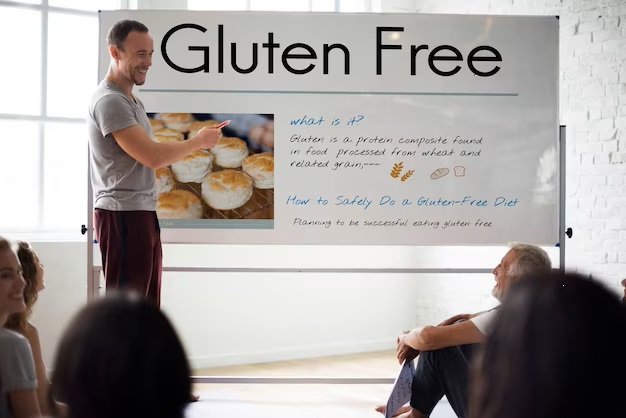
After suffering from Celiac illness for almost 15 years, I understood it is not about eating a gluten-free diet meal for weight loss or adopting gluten-free out of fashion. It is more than that; it is a way of life. Adopting a gluten-free lifestyle entails removing gluten from your diet. Gluten is a protein found in wheat, barley, rye, and a few other cereals. People select a gluten-free diet for a variety of reasons, including managing celiac disease, gluten sensitivity, or other health conditions, or simply for personal preference.
If you are thinking about going gluten-free, here are some first steps:
Educate yourself: Learn about the foods that contain gluten and the ones that are naturally free of it. Bread, pasta, cereal, cookies, and cakes are typical gluten-containing foods. Additionally, less visible sources such sauces, soups, and processed foods may contain gluten. Fruits, vegetables, meat, fish, dairy, legumes, nuts, and gluten-free grains including rice, corn, quinoa, and oats are examples of foods that are not contaminated with gluten. However, you should make sure that the oats you eat are clearly labeled as such.
Read food labels: Start closely scanning ingredient labels to spot items that contain gluten. Try to find references to wheat, barley, rye, malt, and their derivatives. It has become simpler to find suitable options because so many food items are labeled gluten-free or it is mentioned that the unit where it is processed contains wheat or what products.
Plan your meals: Planning your meal will win half of the battle.Make a menu that emphasizes naturally gluten-free foods. Add a variety of fruits, vegetables, lean proteins, gluten-free grains, and healthy fats to your diet. You can find several sources for gluten-free recipes and food inspiration, such as websites, mobile applications, and cookbooks.
Be cautious when dining out: When dining out, convey your dietary requirements to the server or chef or carry your dine in card. Inquire about gluten-free options and how food is prepared. Cross-contamination can occur when gluten-free food comes into contact with gluten-containing components or surfaces, therefore good food handling is very important.
Find gluten-free alternatives: Many gluten-free options are available in supermarkets, including gluten-free bread, pasta, and flour. Experiment with different brands to find the ones you like. Keep in mind that certain gluten-free goods may be excessively processed and may not give the same nutritional content as their gluten-containing equivalents, so it is still vital to focus on whole, unprocessed foods.
Stay vigilant and patient: It is important to be attentive when it comes to reading labels and verifying ingredients because gluten might appear unexpectedly. Be kind to yourself as you learn to navigate this new way of eating because adjusting to a gluten-free lifestyle may take some time and effort.
Consult a healthcare professional: If you suspect you have celiac disease or gluten sensitivity, you should see a doctor for a complete diagnosis and treatment plan. They can offer you tailored guidance and assistance.
Remember that switching to a gluten-free diet demands paying close attention to your food selections and being adept at navigating the variety of available foods. It is always advisable to speak with a healthcare provider or qualified dietitian who specializes in gluten-free diets if you have questions about a particular food or specific health issues. Consult a Gastroenterologist for a complete diagnosis and recommendations if you believe you may have celiac disease or gluten intolerance. They can offer you personalized guidance and support.

Comments